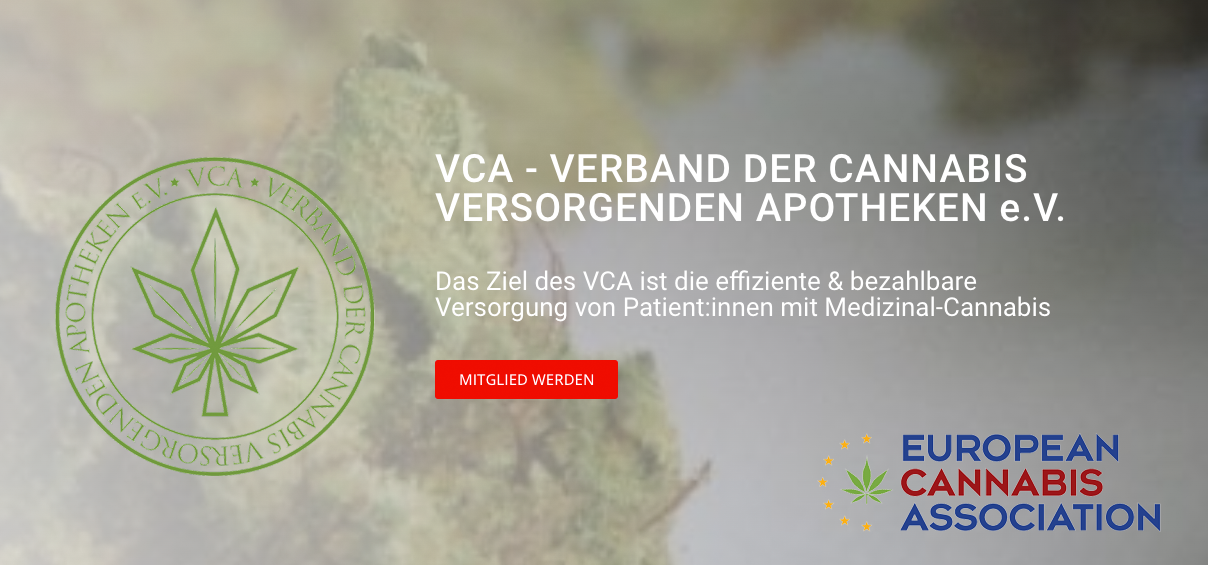Position paper on the possible legalization of cannabis in Germany
In the run-up to a possible legalization of cannabis in Germany, we have prepared a position paper together with the VCA (Verband der Cannabis gebenden Apotheken e.V.) to clearly differentiate the legalization of cannabis for recreational use from medical cannabis for seriously ill patients
by VCA (Verband der Cannabis versorgenden Apotheken e.V.) and ECA (European Cannabis Association)
- Clear demarcation between the legalization of cannabis for recreational use and medical cannabis for seriously ill patients. Legalization must not endanger the supply of patients with medical cannabis (regulated by BtMG Annex I to III § 1 para. 1). On the contrary, the prescription of cannabis due to a disease must be simplified. The supply of patients must be possible without the approval of the health insurance companies.
- The therapeutic sovereignty of physicians must remain untouched. It must be possible to change the dosage form at any time.
- Legalization must not exacerbate the already existing supply bottlenecks.
- Identity checks must be simplified, possibly through nationwide acceptance of rapid testing by pharmacy regulators.
- There must be clear transparency as to how the importation of cannabis for recreational use is compatible with the Single Convention on Narcotic Drugs (1961), the Convention on Psychotropic Substances (1971), and the United Nations Convention Against Illicit Traffic in Narcotic Drugs and Psychotropic Substances (1988), to which Germany is a party.
- It must be clearly defined from where cannabis for recreational use is to be obtained. Traceability of the source must be ensured and be comprehensible for the consumer. It must be ensured that cannabis for recreational use does not contain heavy metals or other harmful substances, such as pesticides. The quality for the protection of the consumer must be clearly in the foreground.
- Structures for review and compliance with laws regulating legalization must be clearly defined and available.
- Youth protection and prevention must be clearly defined and implemented. Resources must be allocated to this task.
- The THC content must be clearly limited for the area of recreational use. This must be verified by regular sampling and quantitative analysis.
- The gray area in which CBD products operate must finally be regulated. This requires clear concentration guidelines for the over-the-counter and prescription sectors.
- There must be a clear definition of what qualifications a person must have for dispensing advice, prevention advice, addiction advice, and checking the quality and condition of the goods (contamination, mold). A mere certificate of competence, as is the case for drugstores selling food supplements, for example, is by no means sufficient. A certificate of competence would have to be defined here.
- A regular review of the certificate of expertise must be ensured, as well as the guarantee that a person with this knowledge is always present.
Solution approaches:
- Medical cannabis continues to be covered by a BTM prescription with a simplified procedure for cost coverage by the health insurance funds and thus recognition of the physician’s therapeutic authority.
- Cost absorption of CBD preparations by the health insurance when prescribed on prescription (CBD content must be defined here).
- Cannabis for recreational use in licensed stores with clearly defined THC upper limits; possibility of tracing the sources of supply must be guaranteed. Standardized quality (concentration of THC, no contamination by germs and molds) must be defined and verified for the protection of consumers.


